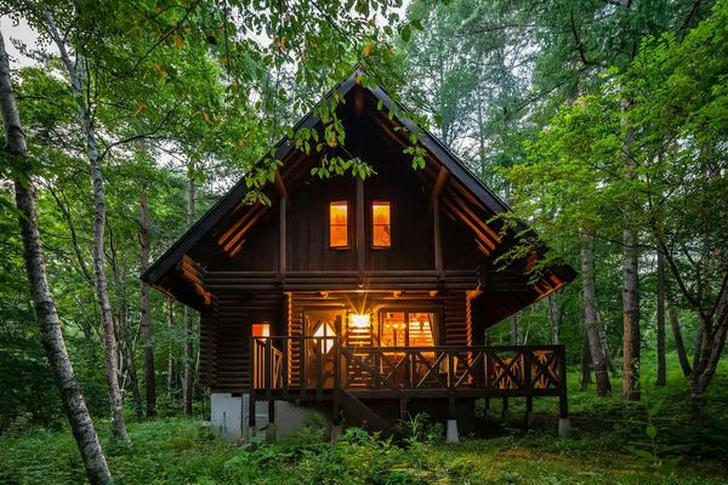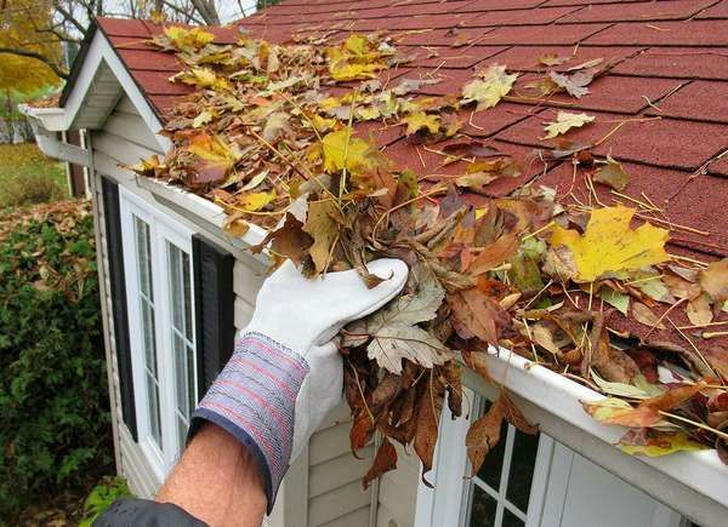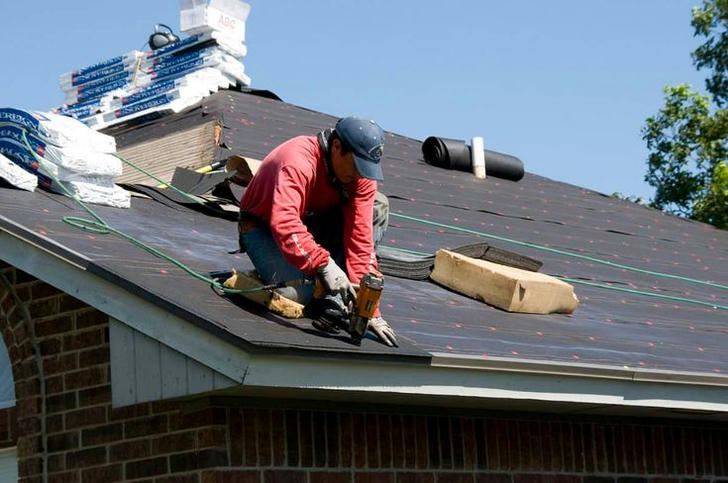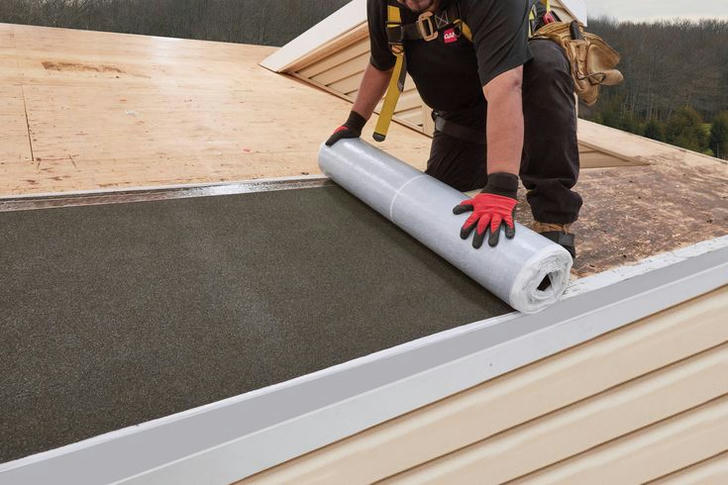The Ultimate Guide to Log Cabin Roof Repair and Maintenance
The roof of your log cabin is arguably its most important protective feature. It shields you from rain, snow, wind, and extreme temperatures, and ensures the structural integrity of your cabin. Over time, however, even the best-maintained roof can develop issues, from minor leaks to major structural damage. In this guide, we’ll take you through the essentials of roof maintenance and repair, helping you to extend the life of your roof and keep your cabin safe and dry. From routine care to addressing leaks, we’ll cover everything you need to know to maintain a healthy, functional roof.

Why Roof Maintenance is Crucial
A well-maintained roof is vital for the longevity of your log cabin. A leaky roof, if left unchecked, can lead to water damage, mold growth, and the deterioration of the wooden structure. Beyond aesthetics, proper roof care helps maintain insulation efficiency, keeps your home energy-efficient, and prevents costly repairs down the road.
Case Example: A cabin owner in the Appalachian Mountains noticed small water stains on their bedroom ceiling after heavy rainfall. Ignoring the problem led to water seeping into the insulation and walls, resulting in mold and structural damage.
Case Example: A cabin owner in the Appalachian Mountains noticed small water stains on their bedroom ceiling after heavy rainfall. Ignoring the problem led to water seeping into the insulation and walls, resulting in mold and structural damage. A simple roof inspection could have prevented the extensive repairs they later had to deal with.
1. Regular Inspections: Catch Problems Early
One of the most effective ways to ensure your roof remains in good condition is to inspect it regularly. Catching problems early allows you to make repairs before they become major issues. Roof inspections should be performed at least twice a year—preferably in the spring and fall.
Solution: Conduct a visual inspection to identify signs of damage or wear. Look for missing or damaged shingles, cracks, loose flashing, and clogged gutters. Pay attention to the roof’s overall condition, including sagging areas or stains inside the cabin.
Actionable Steps:
Use a ladder to safely check the roof from the ground. If you're not comfortable on ladders, hire a professional for a comprehensive inspection.
Inspect the roof after major storms, especially during the winter or spring when high winds and heavy rainfall are common.
Case Example: A cabin owner in Northern Michigan conducted routine roof checks after every storm. During one inspection, they noticed a few missing shingles and some loose flashing around the chimney. They were able to replace the shingles and re-seal the flashing, preventing any water penetration.

2. Cleaning Your Roof: Keep It Free from Debris
Debris like leaves, twigs, and moss can accumulate on your roof, blocking gutters and trapping moisture, which can lead to rot and mold. Keeping your roof clean is a simple but essential part of roof maintenance.
Solution: Regularly remove debris from the roof and gutters to maintain proper drainage. This ensures water flows freely off the roof and doesn’t pool or seep into the structure.
Actionable Steps:
Use a broom or leaf blower to clear leaves and twigs from the roof’s surface. Avoid using a pressure washer, as it can damage the roofing material.
Clean the gutters and downspouts regularly to prevent water backup.
In areas where moss is a problem, use a gentle cleaner to treat it and prevent it from regrowing.
Case Example: A log cabin in the Pacific Northwest had an ongoing problem with moss accumulation on the roof due to frequent rain. The homeowner used a moss remover, followed by a soft brush to scrub the roof, ensuring water drainage was unhindered and avoiding rot from the trapped moisture.

3. Repairing Leaks: Act Quickly to Avoid Damage
Roof leaks are one of the most common issues cabin owners face. If left untreated, a small leak can escalate, leading to water damage inside the cabin. It’s essential to repair leaks promptly to avoid extensive damage to both the roof and the interior.
Solution: Leaks can often be fixed by replacing damaged shingles, sealing cracks, or re-caulking areas where water may be entering. For more severe issues, professional repair might be needed.
Actionable Steps:
If you notice a leak, identify the source of the water by checking the roof directly above the leak inside your cabin. Most leaks come from missing shingles, broken tiles, or damaged flashing.
For small leaks, apply roofing cement or sealant to cover the damaged area.
For larger issues, replace the damaged shingles or tiles. If the problem involves flashing around a vent, chimney, or skylight, it may require professional attention.
Case Example: A cabin owner in the Adirondacks noticed water dripping from the ceiling during heavy rains. Upon inspecting the roof, they discovered a missing shingle and some broken flashing around the chimney. After replacing the shingle and re-sealing the flashing, the leak was stopped, and the cabin remained dry.

4. Maintaining Insulation: Protect Your Home from Extreme Temperatures
In addition to preventing leaks, it’s important to maintain proper insulation in your roof. A well-insulated roof helps regulate the temperature inside your cabin, reducing energy costs in both summer and winter. It also prevents moisture buildup, which could lead to mold and rot.
Solution: Ensure that the attic space is properly insulated and ventilated. This will keep the cabin warm in the winter and cool in the summer, while also reducing the risk of condensation and ice dam formation on the roof.
Actionable Steps:
Inspect attic insulation annually to ensure it is evenly distributed and hasn’t shifted over time.
Install or maintain ridge vents and soffit vents to allow for proper airflow, preventing moisture buildup.
If you notice condensation or mold growth in the attic, it may indicate poor ventilation, which should be corrected immediately.
Case Example: A cabin in Vermont faced problems with ice dams every winter, which caused leaks and water damage. After installing better attic ventilation and adding extra insulation, the problem was resolved, and the cabin remained dry during the harsh winter months.

5. Re-roofing: When to Replace Your Roof
Even with regular maintenance, every roof will eventually need to be replaced. If your roof is more than 20-30 years old or is showing extensive damage, it may be time to consider re-roofing.
Solution: When it’s time to replace your roof, choose high-quality, durable materials like metal or slate that will last longer and provide better protection from the elements.
Actionable Steps:
Look for signs of extreme wear, such as widespread curling, cracking, or large sections of missing shingles.
Consult a professional roofer to assess the condition of your roof and determine if re-roofing is necessary.
Case Example: A cabin owner in Wyoming had their roof replaced after noticing significant wear on the shingles. The new metal roof provided superior protection against snow and wind, extending the life of the cabin for decades.
Conclusion
Proper maintenance and timely repairs are essential for extending the life of your log cabin roof. By conducting regular inspections, cleaning debris, fixing leaks quickly, maintaining insulation, and knowing when to re-roof, you can keep your roof in top condition for many years. Always remember that proactive care today can prevent costly repairs tomorrow. Whether you handle repairs yourself or hire professionals, taking the necessary steps to care for your roof will protect your cabin and ensure it remains a cozy, safe retreat for years to come.
